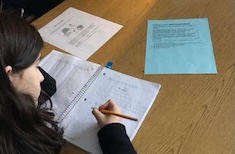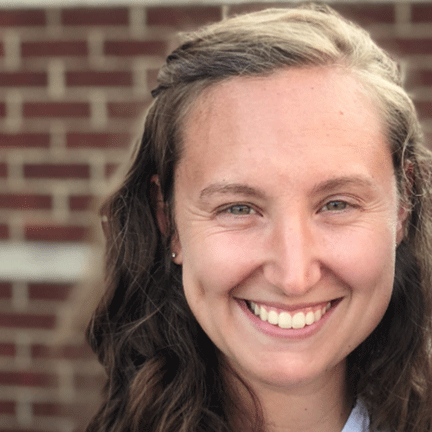How do you take a practice that works so naturally in reading and apply it to mathematics? Does it work the same way? Does it have the same powerful effects?
I have been observing colleagues support students in creating personal goals for their independent reading for years. This intentional and personalized practice allows students to work on a goal that is meaningful to them. These goals ebb and flow throughout the year for each student as they grow and evolve as readers and writers. Some students may work on reading behaviors for a time, such as choosing a good place to sit free from distractions, or reading books from a range of genres. Other students may work on a specific reading skill, such as reading with prosody or increasing vocabulary by identifying unknown words and working to figure out their meaning.
In an effort to replicate this practice in my fourth-grade math classroom, I collaborated with my instructional coach to lay out what goal setting for math independent work might look like. We started by brainstorming a few big buckets of goal areas that could span units no matter the math content, skills, and standards addressed. We kept coming back to the standards for mathematical practice set out in the Common Core State Standards and adopted by many states. These math practices outline the types of behaviors mathematicians employ:
- Make sense of problems and persevere in solving them.
- Reason abstractly and quantitatively.
- Construct viable arguments and critique the reasoning of others.
- Model with mathematics.
- Use appropriate tools strategically.
- Attend to precision.
- Look for and make use of structure.
- Look for and express regularity in repeated reasoning.
We narrowed them down to four main goal areas that students could choose from: Making Sense of Problems, Math Explanations, Accuracy and Reasonableness, and Identifying Patterns in Complex Problems. These four areas encompassed the major areas for growth we were observing in my students.
Self-Assessment
To help students select a goal area for themselves, we had them complete a self-assessment (pages 1–2 in attached resource). Students placed a check mark next to one of the statements under each of the four goal areas. They were given room to write down additional thoughts or notes under each section as well. Once students had completed the self-assessment, they selected the area for their own personal math goal by drawing a star next to their choice.
Self-Assessment on Making Sense of Problems:
- I sometimes struggle getting started with a problem. I need someone to help me get started.
- I can get started and try a strategy, but if it isn’t working, it is hard for me to think of a different strategy to try.
- I can get started on difficult problems. I can try different strategies if my first attempt doesn’t work. I can choose tools to help me understand the problem and solve the problem.
Making Sense of Problems related to students’ ability to get started on a problem and to make attempts at solving even if they were not sure they would be correct.
Self-Assessment on Math Explanations
- My explanations make sense to me but are unclear to others.
- My explanations make sense to me. When others look at my explanations, they sometimes have questions about what I did or why I did it.
- My mathematical explanations are clear, organized, and understandable to all. I include appropriate vocabulary and detailed models to justify and prove my answer.
Math Explanations got at students being able to explain how they solved a problem and why they solved it that way.
Self-Assessment on Accuracy and Reasonableness
- I don’t know if my answer is correct or is reasonable.
- I think my answer is correct and reasonable, but I can’t identify my errors or find proof that I am correct.
- I begin working on a problem by thinking about a reasonable answer. When I am finished, I compare my answer with my reasonable answer. If my answer is far off, I can go back to find my error.
Accuracy and Reasonableness focused on students attending to whether their answers make sense.
Self-Assessment on Identifying Patterns in Complex Problems
- I sometimes struggle seeing how numbers work together. I need someone to help me identify patterns and think beyond just odd and even patterns.
- I can find some patterns with numbers, but it is difficult for me to explain WHY those patterns are true.
- I am able to confidently see how numbers work together. I can explain patterns in complex problems and WHY those patterns are true. I look for mathematical claims and ways to deepen my understanding of numbers.
Identifying Patterns in Complex Problems allowed for going deeper with the problem at hand to make generalizations and think about why patterns work the way they do.
Reflection
At the end of my minilesson each day, I would remind students to think about their personal math goal as they completed independent or group practice opportunities. No matter the content we were focused on that day, each student’s personal math goal could be worked on and focused on.
Once a week, I would ask students to reflect on the work and practice they had completed that week as well as ask them to reflect on the progress they had made toward their personal math goal. Students found a piece of work or an example of how they had worked on their personal goal that week. Then, they filled out a reflection sheet (pages 3-6 in attached resource) to document the steps they took to work on their goal, and noted how it went. Students stapled the reflection sheet to the piece of work for that week.

In this photo, Angela is going back to her math explanation in her notebook with the blue reflection sheet nearby to see how she might improve her work. She said, “I’m working on my personal goal of math explanations, and I needed to reorganize my work so others can understand it.”
Every couple of weeks, the four different goal groups met together to share their experiences. They brought one example and reflection sheet with them to the group meeting, and everyone had a chance to share. At first, students just went around the circle sharing their examples of their personal goal work, but after a few of these group reflection opportunities, they started adding on to what group members were saying or relating their experiences to the experiences of others.
Conferring with students while they worked independently or in small groups, I had a clipboard with the class roster and the goal students had set for themselves. I had conversations with students on how the work toward their goal was going and provided feedback and guidance on next steps. If I noticed that a common thread was coming up for members of the same group, I would quickly pull them together to talk through what was going on and how they could overcome it. For example, the math explanations group was having trouble writing their explanations in a way that other students could understand. We talked about how labels and drawings can be an entry point in explaining their thinking to communicate with other people.
This system of student goal setting for math independent work time supported students in thinking like mathematicians. The fourth graders were not just thinking about the math task at hand and getting it done; they were attending to their personal goal as well. At the start of second semester, students filled out the self-assessment again, and they reevaluated which area was the top priority for themselves as mathematicians. They could change or keep their original goal.
Though not as natural as setting reading goals and not as fluid as independent reading goals could be throughout the year, this attempt at personal math goals allowed for students to take ownership of their progress and helped them focus on an area for growth.
Resources
Download the Student Math Goals Self-Assessment and Reflection.



